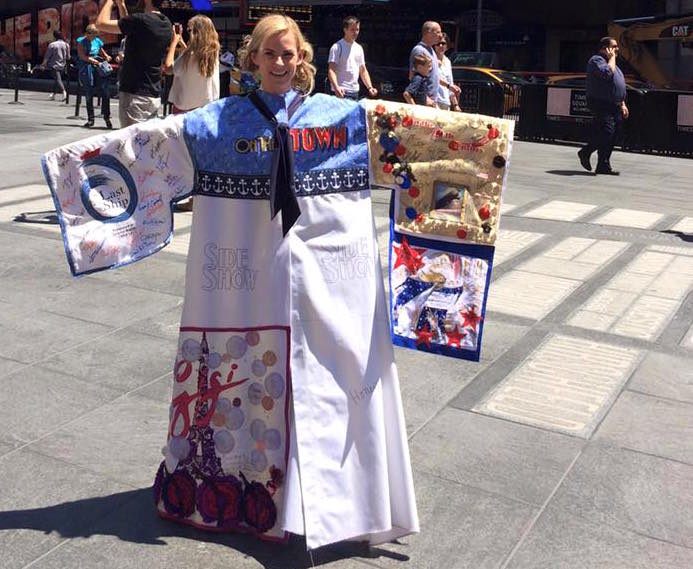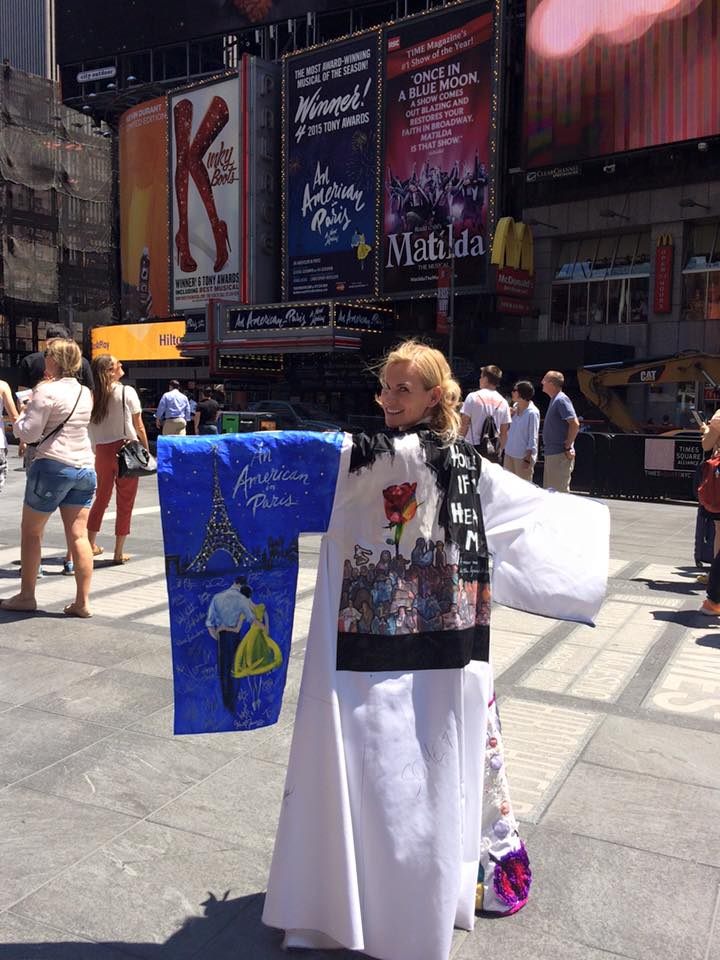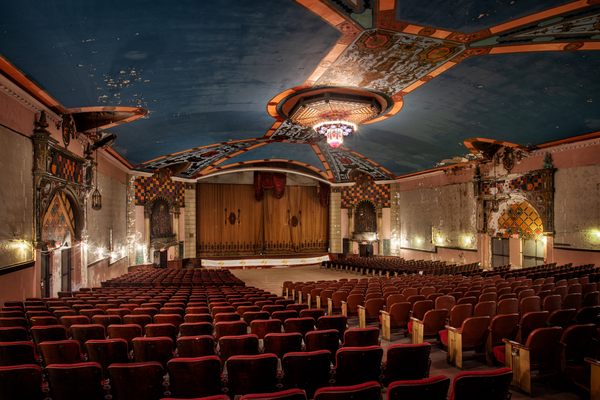Object of Intrigue: The Gypsy Robe, a Broadway Tradition

Gypsy robe recipient Jennie Ford, a cast member of the current Broadway musical An American in Paris.
For actors, singers, dancers, and triple-threats, the road to Broadway is a long, hard trek beset by constant rejection, frustration, and self-doubt. No matter how talented you are, you need all the luck you can get—which is why the theater world is packed with rituals, traditions, and superstitions.
One of the most mysterious traditions is that of the gypsy robe, which is given to a chosen performer in an anointing ceremony that accompanies the debut of every Broadway musical. The oversized robe starts out as a plain muslin garment. As it gets passed from show to show, it gets decorated and signed, until it’s a colorful quilt of Broadway musical memorabilia.
That legacy goes all the way back to 1950, when behind-the-scenes antics during the production of Gentlemen Prefer Blondes led to the creation of the gypsy robe tradition. According to Backstage, ”dancer Bill Bradley used to steal cast mate Florence Baum’s dressing robe and run around backstage in it to entertain the company.” The robe was then passed on to Baum and Bradley’s actor friend Arthur Partington, who was then about to appear in an opening production called Call Me Madam.
In Broadway parlance, gypsies are dogged, adaptable performers known for slogging it out night after night without receiving star billing. The Actors’ Equity Association—the union for Broadway performers—refers to Broadway gypsies as “a mystical, nomadic tribe of people who know what it takes to survive.” At the gypsy robe ceremony, the robe is passed on to the chorus member from the opening musical who has appeared in the most Broadway shows.

Ford has eight Broadway chorus credits to her name.
An hour before the opening night of a show, the cast and crew gather on stage. They stand in a circle, into which walk two people: a representative from Actors’ Equity and a chorus member from the last musical that opened on Broadway. The duo is there to present a robe to the newest king or queen of the gypsies.
The newly anointed king or queen dons the robe, takes a lap around the circle collecting high-fives and allowing everyone to touch the robe for luck, and basks in the limelight for a few precious minutes. Then it’s time to get ready for the opening-night show.
According to Playbill.com, in the days following the robe ceremony, ”the recipient collaborates with the costume department to create a small panel to attach to the robe to represent the show, typically with every cast member’s signature on it.”
Your average gypsy robe will travel to around a dozen productions before being retired. Most of the fully decorated robes are held at Actors Equity, but a few have found their way to other institutions—the Museum of the City of New York, the New York Public Library for the Performing Arts at Lincoln Center, and the Smithsonian are among those who hold gypsy robes in their collections. Meanwhile, the “gypsy stories“ page on Actors’ Equity’s site includes tales of transience and triumph from the lives of the Broadway performers who have received the robe.
In addition to honoring the unsung workhorses of the Great White Way, the gypsy robe tradition, says Backstage, “also connects each show—be it smash or flop—to the greater Broadway legacy.”
Once the opening night performance begins, the robe gets stored backstage, and the regal gypsy returns to relative anonymity in the chorus.
















Follow us on Twitter to get the latest on the world's hidden wonders.
Like us on Facebook to get the latest on the world's hidden wonders.
Follow us on Twitter Like us on Facebook